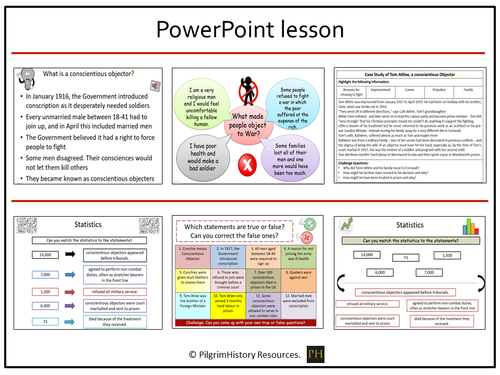


World War I
The aim of this lesson is to question whether the Government was right to punish conscientious objectors during World War 1 and how frightening it was for individuals to refuse.
This is a controversial subject and was extremely difficult to understand and address at the time.
Therefore the lesson explains why many people in World 1 refused to fight, despite government propaganda and pressure from society for them to do so as they became targets of abuse.
Luckily now there is a wealth of video and audio evidence in this lesson (linked to the BBC in particular) which deconstructs and challenges the old arguments of cowardice and shame as well as understanding individuals’ rights to uphold their beliefs and consciences.
Students are given two case studies to analyse before engaging in a mini debate on the right or wrongs to conscientiously object to war.
The plenary challenges them to decide if the given statements from the lesson are true or false.
The lesson is enquiry based with a key question using a lightbulb posed at the start of the lesson and revisited throughout to show the progress of learning.
The resource includes retrieval practice activities, suggested teaching strategies and differentiated materials, and comes in Powerpoint format if there is a wish to adapt and change.
Something went wrong, please try again later.
This resource hasn't been reviewed yet
To ensure quality for our reviews, only customers who have purchased this resource can review it
Report this resourceto let us know if it violates our terms and conditions.
Our customer service team will review your report and will be in touch.